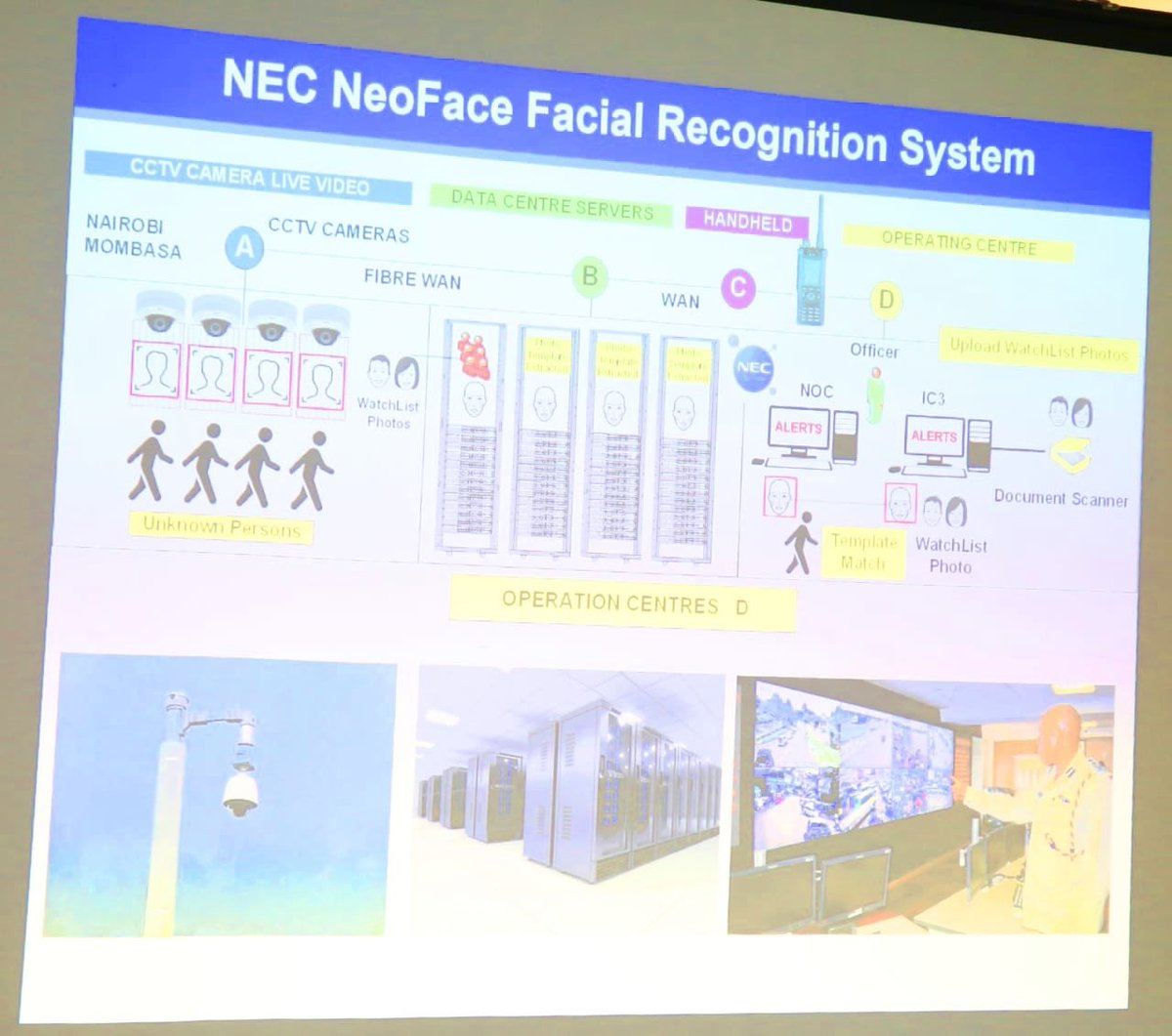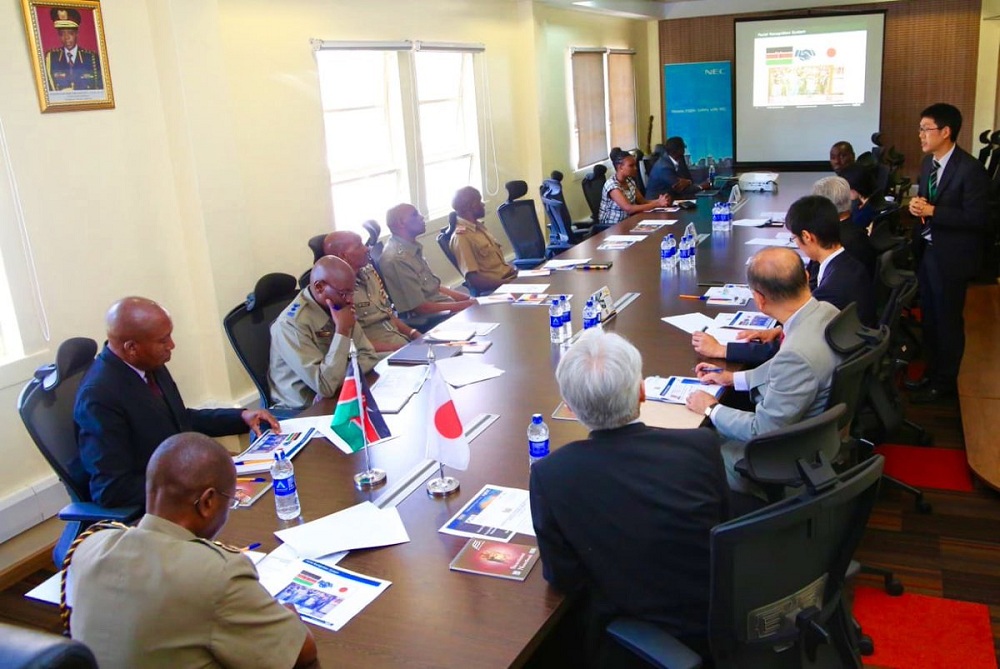[dropcap]T[/dropcap]he days of criminal elements walking freely in Nairobi and Mombasa are now over after the National Police Service upgraded its integrated command and control system covering the two cities to incorporate facial recognition capability.
According to Inspector General of Police Joseph Boinnet, the technology will help in fast and accurate identification of suspects. It was installed at the Jogoo House-based command, control and communication (C3) centre by Japanese IT giant, NEC Corp. It was handed to the police on Tuesday.
It means officers manning the C3 centre will now be able to pick out in real time suspects on security watch lists walking the streets as the system will sent alerts after comparing their facial features with those in the data base. Such a data base can created using images and biometric obtained from other official data bases such as those of the National Registration Bureau and the Independent Electoral and Boundaries Commission. Some security agencies and private actors such as banks are also known to mine social media sites such as Facebook to update their records with latest images.
Hitherto, police have been relying on footage picked by 1,800 CCTV cameras installed by Safaricom at a cost of Ksh 15 billion under the Integrated Public Safety Communication and Surveillance System to fight crime but could not determine one’s criminal history by merely looking at them.
The cameras have face and motor vehicle number plate recognition capabilities, officers manning the C3 centre relied on images relayed from the field, incident reports from members of the public, intelligence and coordination with officers on the ground. Footage captured by the cameras can also be retrieved to resolve incidents that are reported late.

With real time face recognition capabilities, their reach is set to extend beyond tackling real time incidents to arresting those previously linked to criminal activities such as terrorism.
The effectiveness of the system has also been previously questions as it did not help resolve the murder of IEBC ICT manager Chris Msando. Though his movements were partly captured, his vehicle disappeared from the radar with police later saying the cameras went off. It also emerged that the police-owned CCTV cameras only cover strategic locations and are also affected by darkness as they can only deliver black and white images.
Whether the new capabilities with enhance efficiency in police operations remains to be seen. Critics have previously said that the fight against crime can only succeed if the government sorts out the basics and invest in police reforms, attitude and behaviour change, police communication, police coordination and response to crime, anti-corruption measures, forensics, and effective prosecution of cases.
READ: EACC LAUNCHES PROBE INTO DEPUTY GOVERNOR’S ABSENTEEISM
Kenya Police Service and Administration Police Service to, among others, boost coordination with the Officer Commanding Police Station (OCS) getting an enhanced mandate.
But the upgrade of the system comes despite previous concerns over its effect on constitutional guarantees to privacy. The Data Protection Bill is yet to be tabled in Parliament.












2 Comments